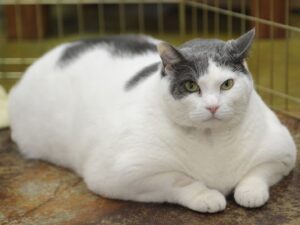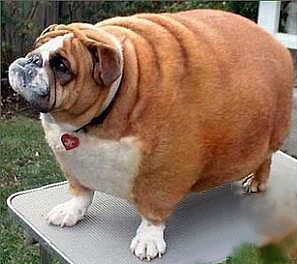The excitement of starting a new year is upon us. As we focus on our resolutions for 2017, I have no doubt many of us have set goals that include eating healthier, getting more exercise and losing weight. What about for our pets? Unfortunately, the continuous rise in obesity in the United States is not exclusive to people, but also includes our non-human counterparts.
Data from Nationwide, the first and largest pet health insurance provider in the country, reveals that pet obesity increased for the sixth straight year. According to Nationwide, in 2015 their members filed 1.3 million pet insurance claims for issues and diseases related to pet obesity. The total sum of the veterinary expenses pursuant to these claims exceeded $60 million. Moreover, the total increase in obesity-related claims over the last three years is twenty-three percent.
Just as in humans, excessive body fat increases the risk of preventable health issues and may decrease the life expectancy of the dogs and cats we cherish as companion animals. “Obesity can be detrimental to the livelihood of our pets,” said Nationwide Vice President and Chief Veterinary Medical Officer Carol McConnell, DVM, MBA. “Pet owners need to be aware of the quality and amount of food or treats they give their furry family members. The New Year presents a perfect opportunity to create regular exercise routines for our pets and begin to effectively manage their eating habits to avoid excess weight gain. Scheduling routine wellness exams with your veterinarian is the most effective way to get started on monitoring your pet’s weight, particularly for cats.”
According to more than 49,000 pet insurance claims received by Nationwide in 2015, arthritis was the most common disease aggravated by excessive weight in canines, with treatment averaging $295 per pet. The most common obesity-related condition in cats was bladder or urinary tract disease with an average claim of $442 per pet.
Some simple steps to assist in regulating your pet’s weight are as follows:
- Avoid feeding table scraps.
- Keep a consistent diet by measuring and monitoring the quantity of food you give your pet.
- Regulate the amount of treats you give your pet (I know this is challenging as many of us love to spoil our furry children!).
- Establish a healthy and fun exercise schedule.
Most importantly, consult your veterinarian to best determine the weight loss protocol for your pet(s).
This article was adapted from a PR Newswire story featured in Pet Sitter’s International Weekly News Brief titled “Pet Obesity on the Rise for Sixth Straight Year.”



